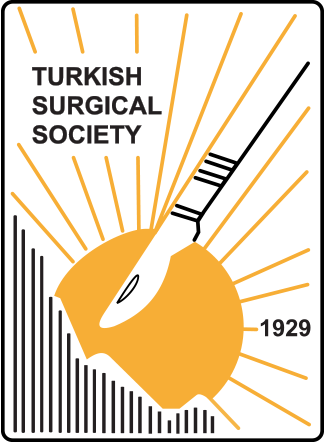Abstract
Common bile duct stones may be primary stones originating from the duct itself or secondary stones that have fallen out of the gallbladder. They can be single or multiple. Common bile duct stones are found in 15 % of a group of patients with gallbladder stones. Secondary stones are generally bilirubin and cholesterol stones. Primary bile duct stones occur at least 2 years after cholecystectomy. These stones are also bilirubin and cholesterol stones and calcium stones are rarely detected. In this patient presented here, sixty five stones nearly 10 mm were extracted from the common bile duct by endoscopic retrograde cholangiopancreatography. Previously, fourty four 10 mm stones and twenty two 5 mm to 10 mm stones had been removed during cholecystectomy. This case is interesting for multiple and large size calcium carbonate stones that are secondary, which in the common bile duct are usually encountered.
Keywords:
Choledocholithiasis, Cholelithiasis, ERCP, calcium stones
References
1Saharia PC, Zuidema GD, Cameron JL. Primary common duct stones. Ann Surg 1977;185:598-604.
2Schirmer BD, Winters KL, Edlich RF. Cholelithiasis and cholecystitis. J Long Term Eff Med Implants 2005; 15: 329-338
3Metcalfe MS, Ong T, Bruening MH, Iswariah H, Wemyss- Holden SA, Maddern GJ. Is laparoscopic intraoperative cholangiogram a matter of routine? Am J Surg 2004; 187:475-481
4Hallal AH, Amortegui JD, Jeroukhimov IM, Casillas J, et al. Magnetic resonance cholangiopancreatography accurately detects common bile duct stones in resolving gallstone pancreatitis. J Am Coll Surg 2005; 200: 869-875
5Peng WK, Sheikh Z, Paterson-Brown S, Nixon SJ. Role of liver function tests in predicting common bile duct stones in acute calculous cholecystitis. Br J Surg 2005; 92: 1241-1247
6Abboud PA, Malet PF, Berlin JA, Staroscik R, et al. Predictors of common bile duct stones prior to cholecystectomy: a metaanalysis. Gastrointest Endosc 1996; 44: 450-455
7Shiffman ML, Sugerman HJ, Moore EW. Human gallbladder mucosal function. Effect of concentration and acidification of bile on cholesterol and calcium solubility. Gastroenterology 1990;99:1452-1459
8Collins C, Maguire D, Ireland A, Fitzgerald E, et al. Prospective study of common bile duct calculi in patients undergoing laparoscopic cholecystectomy natural history of choledocholithiasis revisited Ann Surg 2004;239: 28-33
9Hammarstrom LE, Stridbeck H, Ihse I. Long-term follow-up after endoscopic treatment of bile duct calculi in cholecystectomized patients. World J Surg. 1996;20:272-276.
10Sugiyama M, Atomi Y. Follow-up of more than 10 years after endoscopic sphincterotomy for choledocholithiasis in young patients. Br J Surg 1998;85:917-921.
11Gregg JA, De Girolami P, Carr-Locke DL. Effects of sphincteroplasty and endoscopic sphincterotomy on the bacteriologic characteristics of the common bile duct. Am J Surg 1985;149:668-671.
12Wolpers C, Hofmann AF. Solitary versus multiple cholesterol gallbladder stones Mechanisms of formation and growth. Clin Investig 1993; 71:423-434
13Paolo P, Nicoletta P, Carla M, Andrea M. Ultrasonographic diagnosis of choledocholithiasis. Acta Biomed Ateneo Parmense 1990; 61: 213-218
14Cabada Giadas T, Sarria Octavio de Toledo L, et al. Helical CT cholangiography in the evaluation of the biliary tract: application to the diagnosis of choledocholithiasis. Abdom Imaging 2002; 27: 61-70
15Polkowski M, Regula J, Tilszer A, Butruk E. Endoscopic ultrasound versus endoscopic retrograde cholangiography for patients with intermediate probability of bile duct stones: a randomized trial comparing two management strategies. Endoscopy 2007;39:296-303
16Bhasin DK, Sinha SK. Comparing the treatment outcomes of endoscopic papillary dilation and endoscopic sphincterotomy for removal of bile duct stones. Gastrointest Endosc 1999;50:886-888.
17Nathanson LK, O'Rourke NA, Martin IJ, Fielding GA et al. Postoperative ERCP versus laparoscopic choledochotomy for clearance of selected bile duct calculi: a randomized trial. Ann Surg 2005; 242: 188-192



